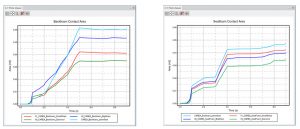Cabin Comfort
Problem Statement:
Here’s a familiar scenario: You’re planning to buy a new car and recently have been doing a survey of several car models. You wonder how your new car will be, what will it look like, will it fit into your budget? You also have a huge wish list. One of the most important items on your wish list is how you feel when you settle into the driver’s seat. Whether it’s a daily commute through heavy traffic or a long weekend drive, you want to feel relaxed in your car.
In today’s driving world, a comfortable experience is what every customer is looking for in a new car and about 75% of the cabin comfort comes from the seats. Many people working long hours in an office just want to unwind during their commute. For young car enthusiasts, a good support from the driver’s seat adds to the fun and driving experience. Thus, seating comfort has become one of the most important deciding factors for today’s new car buyers. Further, if we think of racing cars then we need to meet strong requirements for the seating comfort and support.
Automotive manufacturers who wish to provide best-in-class seating comfort have the following challenges:
- How to design a car seat which meets safety parameters like hip point safety?
- How to achieve better seat comfort to meet fit, feel, and support (like lumbar, thigh, side, etc.) parameters?
- How to improve the thermal comfort of the seat which constitutes a large portion of the perceived comfort in extreme weather conditions?
- How to expedite the design and validation process through seamless integration of different stake holders from designers to analysts, suppliers to manufacturers, executives, and decision makers?
At SIMULIA, we have developed a 3DEXPERIENCE platform solution to design a car seat for a superior seating experience, as outlined in the following steps.
Solution:
- Designing a seat for comfort starts with the selection of an appropriate foam material. Typically, elastomeric polyurethane foams are used in seat cushions due to their firmness, durable nature and energy dissipation characteristics. The Hyperfoam material model is well suited for modeling these types of foams.
- Using the material calibration app on the platform with available material test (uniaxial compression) data, we can derive accurate coefficients for the hyperfoam material model.
- The seat finite element model is built by using the foam material model calibrated as noted above, wherein the seat frame is considered as rigid. The model is subjected to typical loads coming from the H-point dummy model for safety and comfort evaluation.
- The next step is to evaluate different cushion foam design variants for best comfort in a seamless manner. An engineering template is created in order to execute multiple variant analyses.
- An engineering template allows us to quickly vary certain pre-defined modeling parameters with an intuitive graphical interface. Using this template, we can perform simulations for different seat foam designs.
- Post processing of these simulations is conveniently performed using the physics results explorer app.
The following figure shows a comparison of contact pressure distribution for 4 different seat foam designs:
The first diamond shaped design is the most suitable seat foam design because its peak contact pressure is less than that of the other foam design patterns. Also, the contact pressure distribution reduces gradually towards the front and sides of the cushion. The contact pressure distribution on the backrest is also uniform which indicates better lumbar support.
The figure below compares the contact area for different cushion and backrest foam design patterns:

For both cushion and backrest foams, the contact area for the diamond shaped foam design is the smallest, which creates a microclimate and ensures less humidity between the seat and the occupant, resulting in a more comfortable seating experience.
The above demonstration proves the power of the 3DEXPERIENCE platform to perform virtual testing of a car seat to evaluate and improve seating comfort. We can also perform virtual testing with available foam materials to identify the best material. This simulation process can be tailored to include various other design parameters to enable you to design an optimum car seat that offers a better seat support to the occupant.
In addition, the thermal comfort of the seat can be improved using the available fluid flow based solution.
See all our cabin comfort solutions by visiting: https://www.3ds.com/products-services/simulia/solutions/transportation-mobility/cabin-comfort/
SIMULIA offers an advanced simulation product portfolio, including Abaqus, Isight, fe-safe, Tosca, Simpoe-Mold, SIMPACK, CST Studio Suite, XFlow, PowerFLOW and more. The SIMULIA Learning Community is the place to find the latest resources for SIMULIA software and to collaborate with other users. The key that unlocks the door of innovative thinking and knowledge building, the SIMULIA Learning Community provides you with the tools you need to expand your knowledge, whenever and wherever.

